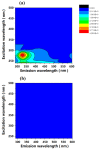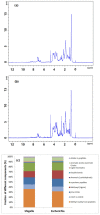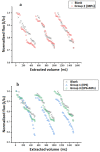Removal and Fouling Influence of Microplastics in Fertilizer Driven Forward Osmosis for Wastewater Reclamation
- PMID: 34832074
- PMCID: PMC8620803
- DOI: 10.3390/membranes11110845
Removal and Fouling Influence of Microplastics in Fertilizer Driven Forward Osmosis for Wastewater Reclamation
Abstract
Insufficient removal of microplastics (MPs) and nanoplastics (NPs) may exert negative effects on the environment and human health during wastewater reclamation. The fertilizer-driven forward osmosis (FDFO) is an emerging potential technology to generate high-quality water for irrigation of hydroponic systems. In this study, the removal of MPs/NPs by the FDFO process together with their impact on FDFO membrane fouling was investigated, due to FDFO's low molecular weight cut-off and energy requirement by using fertilizer as draw solution. Plastic particles with two different sizes (100 nm and 1 μm) and extracellular polymers released by real wastewater bacteria were utilized as model compounds for FDFO performance comparison. Results show that FDFO membrane system could generate high-quality irrigation water with only fertilizer, completely removing extracellular polymers, MPs and NPs from wastewater. It was found that the MPs and NPs themselves do not cause a significant membrane fouling. Moreover, it could help to reduce the membrane fouling caused by extracellular substances. That is probably because MPs and NPs helped to form a loose and porous fouling layer. Therefore, the FDFO process could be a long-term stable (low fouling) process for the reclamation of wastewater with high-quality requirements.
Keywords: forward osmosis; membrane fouling; microplastics; nano-scale plastics.
Conflict of interest statement
The authors declare no conflict of interest.
Figures






References
-
- WWAP (United Nations World Water Assessment Programme) The United Nations World Water Development Report 2018: Nature-Based Solutions for Water. UNESCO; Paris, France: 2018.
-
- WWAP (United Nations World Water Assessment Programme) The United Nations World Water Development Report 2017: Wastewater, The Untapped Resource. UNESCO; Paris, France: 2017.
-
- Xu A., Wu Y.-H., Chen Z., Wu G., Wu Q., Ling F., Huang W.E., Hu H.-Y. Towards the new era of wastewater treatment of China: Development history, current status, and future directions. Water Cycle. 2020;1:80–87. doi: 10.1016/j.watcyc.2020.06.004. - DOI
-
- Asano T., Burton F., Leverenz H. Water Reuse: Issues, Technologies, and Applications. McGraw-Hill Education; New York, NY, USA: 2007.
-
- Crini G., Lichtfouse E. Advantages and disadvantages of techniques used for wastewater treatment. Environ. Chem. Lett. 2019;17:145–155. doi: 10.1007/s10311-018-0785-9. - DOI
Grants and funding
LinkOut - more resources
Full Text Sources
Molecular Biology Databases

